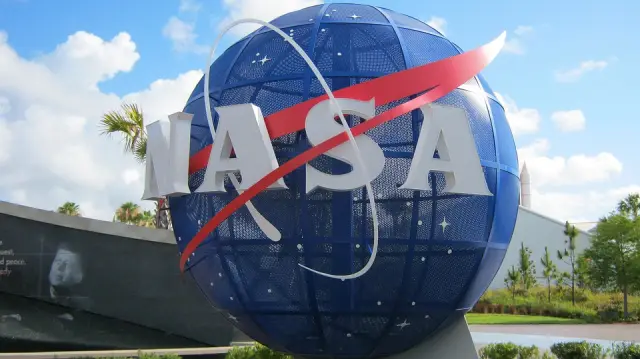NASA Calls for Rules System to Prove Life Beyond Earth
NASA scientists have called on the world to agree on a productive method of announcing the possible discovery of extraterrestrial life on another planet. Various representatives of the space agency, including its chief scientist James Green, stressed that interest in any such announcement may be extremely high.
In addition, there is a real possibility that life beyond Earth will be found relatively soon, they note.
But any announcement can be misunderstood, and any results can be taken to mean more than they actually do. Such results will most likely not be the final proof that extraterrestrial life exists or not, but rather a slow process that may develop over a long period of time.
In this context, it is important that researchers have a meticulously thought-out and accurate method of announcing all the confirmations found. Without this, society may lose confidence in the scientific process if it is forced to believe that extraterrestrial life has been found, and later it will be said that the messages were "ambiguous or incorrect."
Our generation can really become the one who will see evidence of the existence of life beyond the borders of the Earth. With this privileged potential comes responsibility. The magnitude of the question of whether we are alone in the universe and the public interest in it open up the possibility that the indicators can be regarded as something more than confirmed by observations or than observers assume
the authors of a new paper published in the journal Nature write:
To prevent this from happening, the world must agree on "objective standards" for what will be considered a confirmation of the existence of life in the rest of the universe, as well as on "best practices" for transmitting these proven facts.
They propose to make a scale to explain all the probable proven facts, which would begin with finding intriguing signals of biological activity at the very bottom and would go to detailed observations and confirmation at the very top.
This would make it possible to correctly convey any probable confirmations, but without the need for an overly simplistic answer "yes" or "no" to the question about whether life was found.
The same system has already been developed for reports of possible collisions with dangerous asteroids, which, according to scientists, cause the same high interest and danger of becoming a sensation. As with the scale of potential for extraterrestrial life, Nasa has yet to use the upper part of the scale for asteroids, since collisions with near-Earth objects occur very rarely.
Researchers also emphasize that this scale is only an example and that it can be changed in the course of future discussions. For example, the scale can be made narrower to take into account the different types of life that can be found and the environment in which they can be found.

All science is a process of asking questions, putting forward hypotheses, developing new ways to find evidence, and excluding all other explanations. Any single detection may not be fully explained by biological action and must be proven by the following measurements and independent research papers. From time to time there are difficulties with the devices themselves. In other variants, experiments in principle do not give anything, but at the same time, they provide valuable information about what does not work or where it is not worth looking for.
Astrobiology is no different. This field explores some of the most profound questions that can be asked about our origin and place in the universe. As scientists find out more and more about what signals are associated with life in different conditions on our planet, they can create and improve the technologies needed to search for similar signs in other places.
However, the precise details of the scale will change as scientists, communication specialists, and other people participate in the discussion, the publication in Nature provides a starting point for the discussion.
At the first stage of the scale, "level 1", scientists will report hints of signs of life, for example, about a biologically important molecule. An example is the future measurement of some molecule on Mars, potentially associated with life. By going to "level 2", scientists will make sure that the detection was not affected by the contamination of devices on our planet. At "level 3" they will show how this biological signal is located in an analog environment, for example, in an old lake on our planet, similar to the landing site of the Perseverance rover - the Jezero crater.
To add confirmation to the middle of the scale, scientists will supplement these initial findings with information about whether the environment can support life, and exclude non-biological sources. For Mars, in particular, samples returned from Mars can help achieve this development. In the near future, Perseverance will collect and store samples in order to return them in the future. Since different teams on our planet will be able to independently verify hints of life in Mars samples using different instruments, the combination of their proven facts can reach "level 6", the 2nd highest level of the scale. However, in this example, in order to reach level 7 - the standard at which scientists will be more convinced of the discovery of life on Mars - an additional mission to another part of Mars may be needed.
Achieving the highest level of confidence requires the active participation of the entire scientific society
the creators report:
This scale is also applicable to discoveries beyond the boundaries of the Solar System. It is assumed that exoplanets, planets beyond the boundaries of our Galaxy, exceed 300 billion stars in the Milky Way. However, small rocky planets are more difficult to study from afar than gas giants. Future missions and technologies will be needed to study the atmospheres of Earth-sized planets with temperatures similar to Earth's, receiving the necessary amount of starlight for life as we know it. The James Webb Space Telescope, which will be launched this year, will be the next great achievement in this field. However, most likely, an even more sensitive telescope will be needed to find a combination of molecules that indicates the presence of life.
The discovery of oxygen in the atmosphere of an exoplanet - a planet beyond the boundaries of our Galaxy - would be an important step in the search for life. We associate oxygen with life because plants create it and we breathe it, but there are also geological processes that result in oxygen because in itself it is not a confirmation of life. To move up the scale, the mission team could show that the oxygen signal was not contaminated by light reflected from the Earth, and conduct a study of the chemical composition of the planet's atmosphere to exclude a geological explanation. Additional evidence of the presence of an environment that supports life, for example, the ocean, would support the version that this hypothetical planet is inhabited.

Scientists who study exoplanets seek to find oxygen and methane in the Earth's atmosphere - a combination of gases that indicates the presence of life. Since these gases enter into reactions that cancel each other out if there are no biosources of both gases, the detection of both gases will be a key milestone of "level 4".
To reach the 5th level, astrologers will need the 2nd, independent detection of some hint of life, for example, global images of the planet with flowers that indicate forests or algae. Scientists will need additional telescopes or longer observations to be sure that they have found life on an exoplanet.
The creators of the analysis note that the scale should not be considered as a race for the top. The scale emphasizes the importance of the foundation laid by almost all NASA missions without specifically finding probable biological signals, for example, for the properties of the environment on other planetary bodies.
Upcoming missions like Europa Clipper, an orbiter heading for Jupiter's icy moon Europa later this decade, and Dragonfly, an octocopter that will explore Saturn's moon Titan, will provide important data on the environment in which some form of life may one day be found.
With each measurement, we learn more about biological and non-biological planetary actions. "The search for life beyond the boundaries of the Earth requires the broad participation of the scientific community and the conduct of almost all types of observations and tests. In a place, we can be stronger in our efforts to find hints that we are not alone.
Wojtek said:
About author:
Serg Toporkov Ufologist, Ph.D., blogger, I go on my own expeditions for UFOs. I use scientific methods to investigate the UAP phenomenon. Write to me |
Related tags:
NASA rules life beyound Earth Mars GalaxyRandom UFO or conspiracy article
Cosmo-anthropological report of the special department of the Contact Commission.
 Cosmo-anthropological report of the special department of the Contact Commission. Classification of extraterrestrials.
Cosmo-anthropological report of the special department of the Contact Commission. Classification of extraterrestrials.
